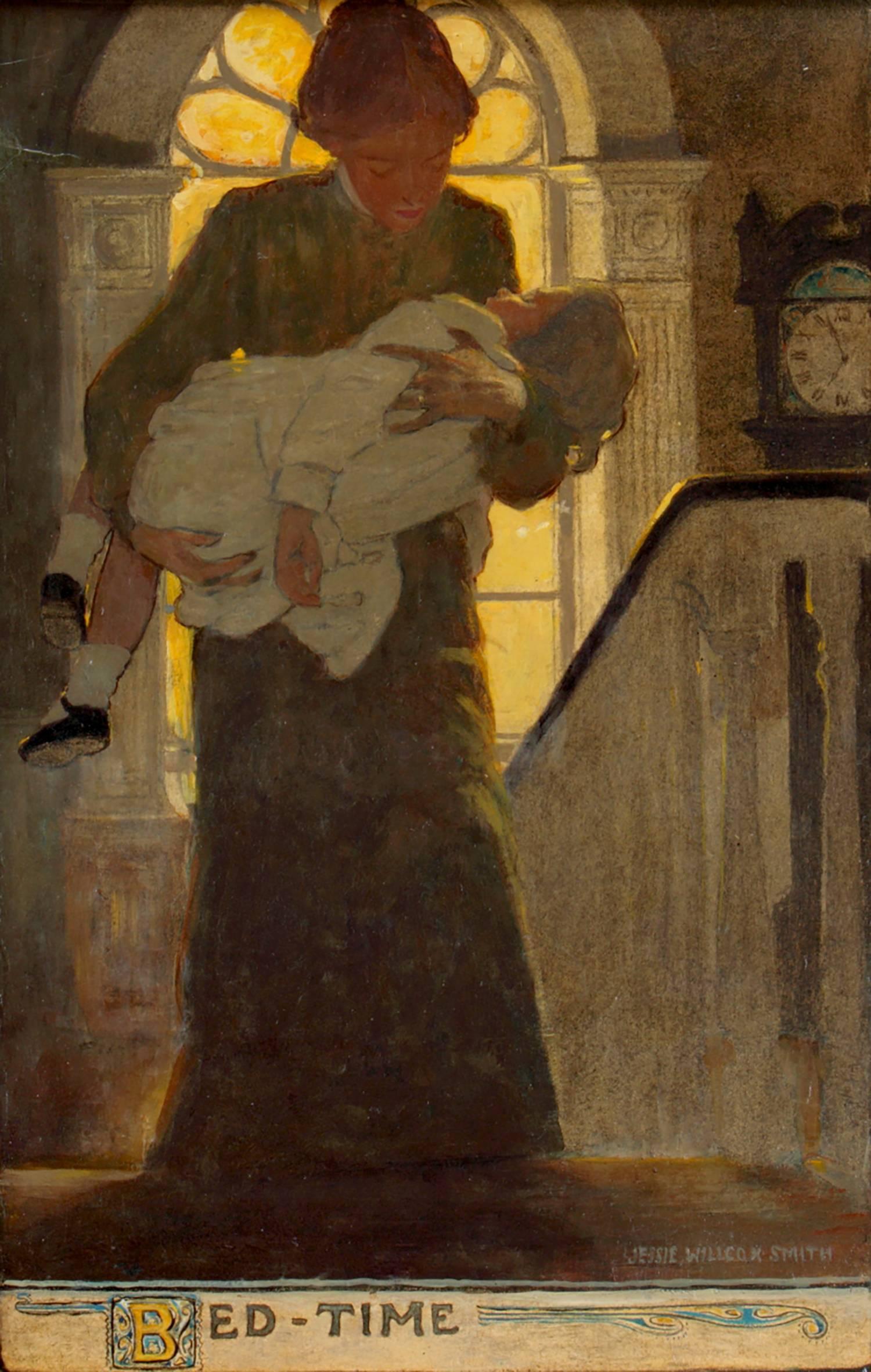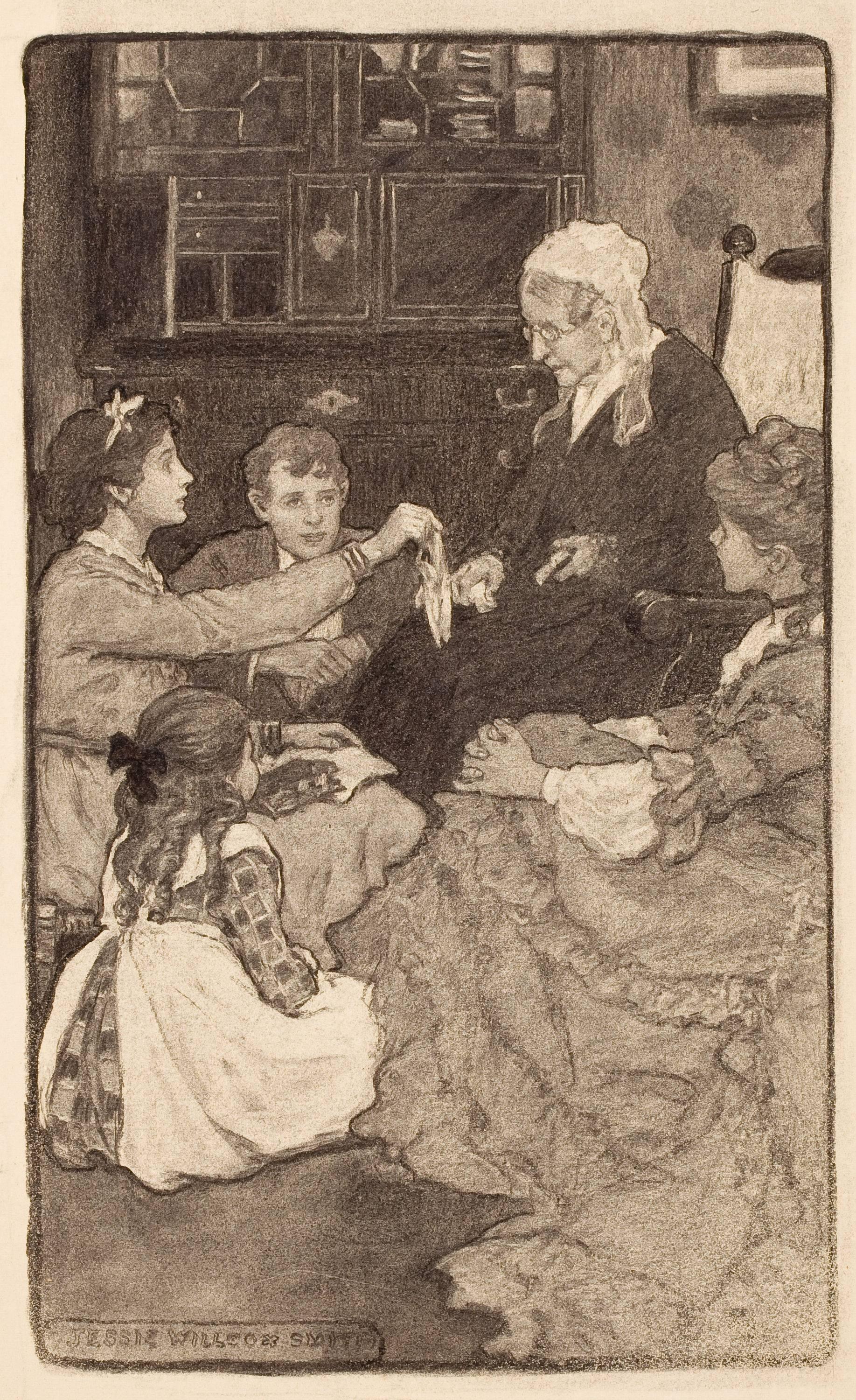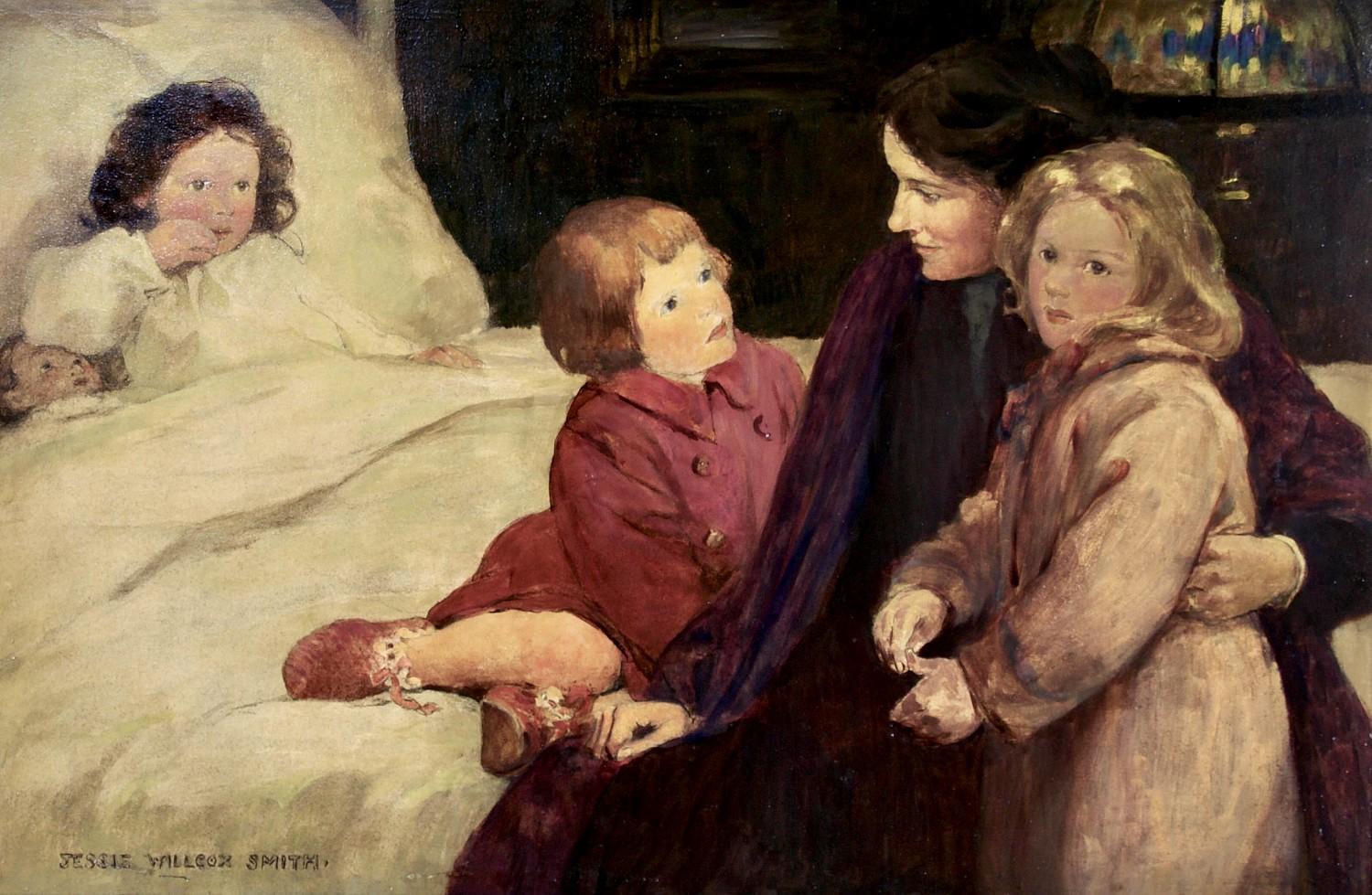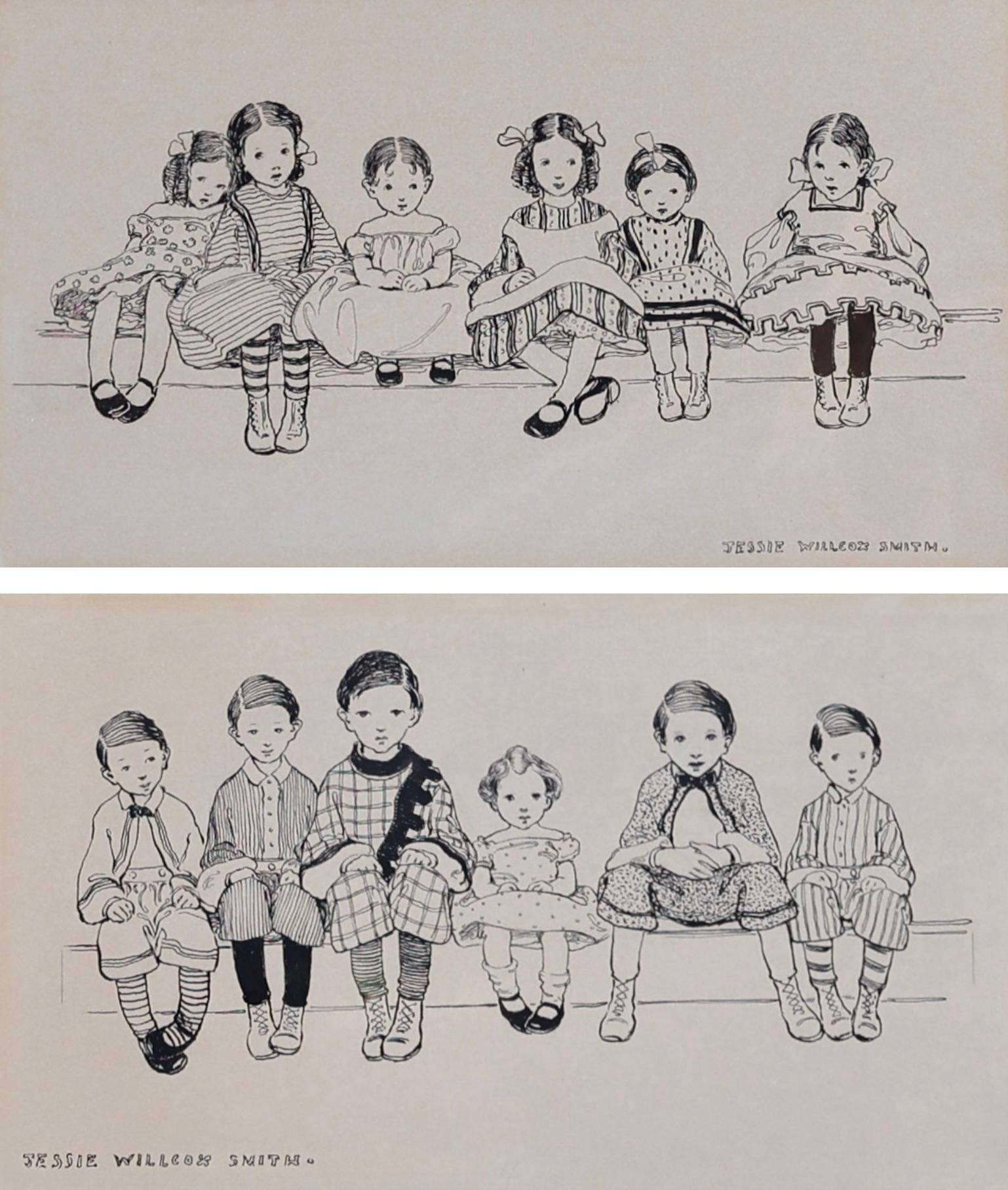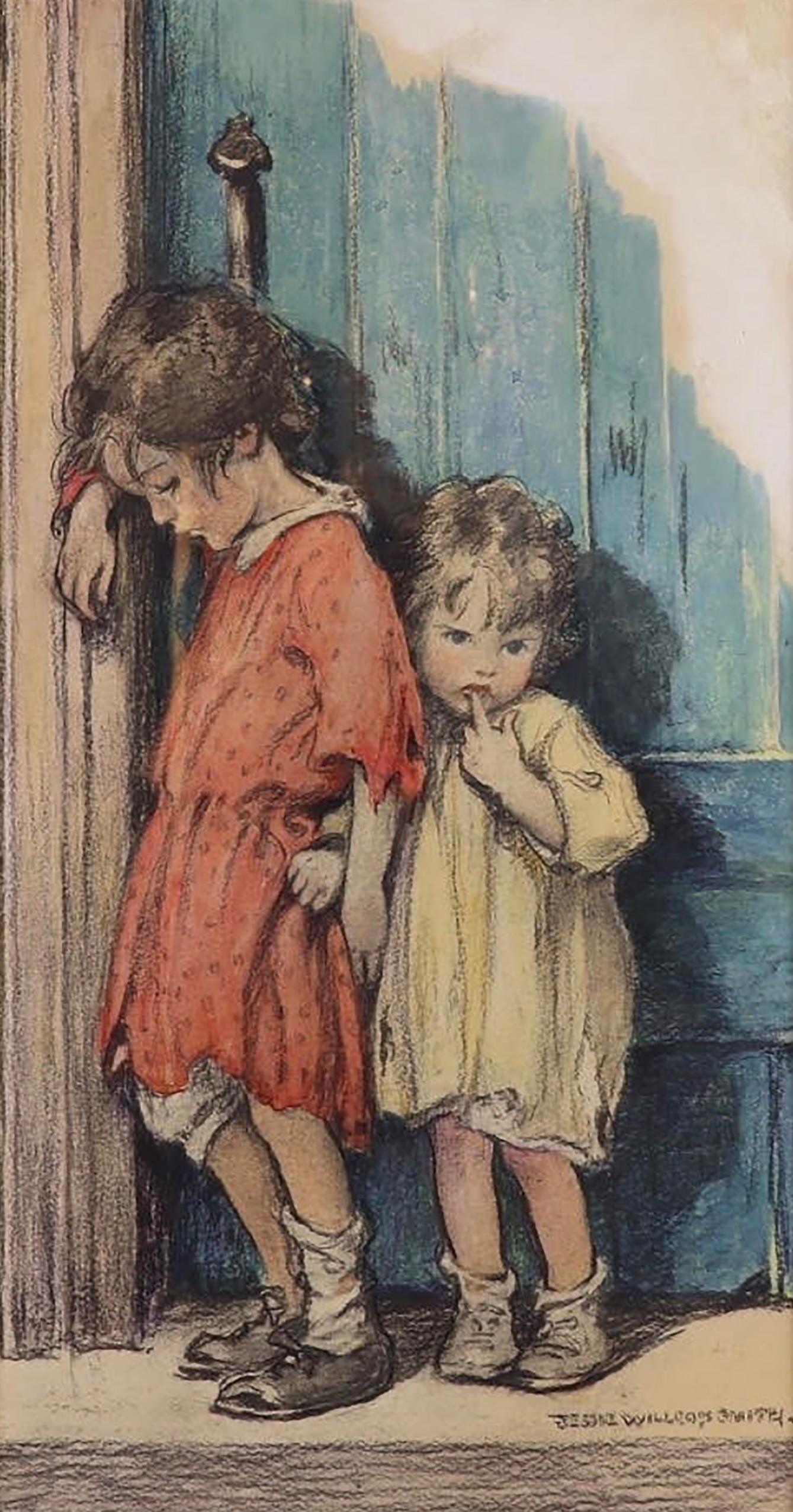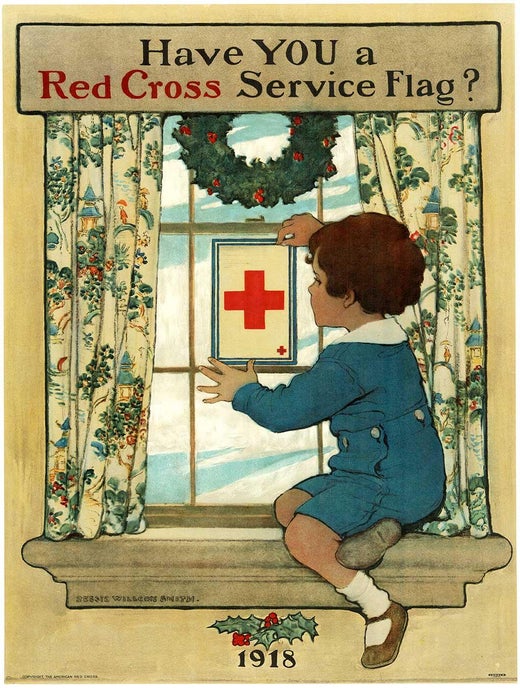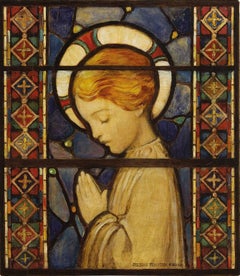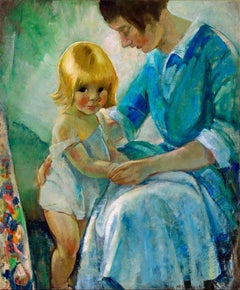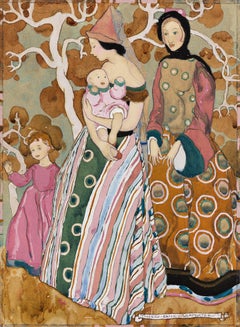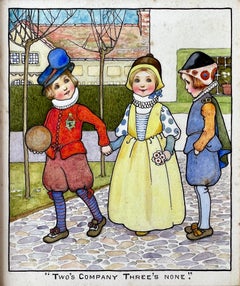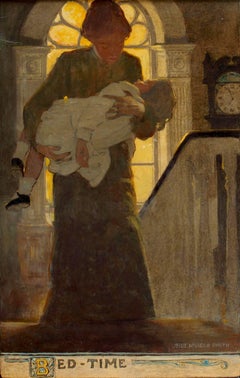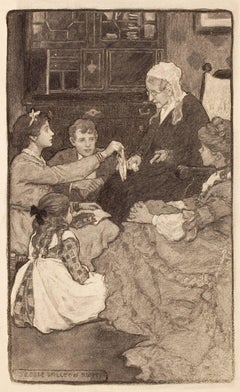Items Similar to Mother and Child, Golden Age of Illustration
Want more images or videos?
Request additional images or videos from the seller
1 of 14
Jessie Willcox SmithMother and Child, Golden Age of Illustration1905 circa
1905 circa
$22,000
£16,710.80
€19,256.50
CA$30,981.45
A$34,347.52
CHF 18,050.96
MX$420,357.28
NOK 225,438.14
SEK 211,596.25
DKK 143,737.85
About the Item
America's greatest female illustrator draws a heartwarming picture of a mother putting to bed her child. Motherly love towards their children is the artist's most iconic theme. This spectacular example was executed in minimal detail but delivered a huge emotional impact. Signed lower left.
Jessie Willcox Smith did this illustration for the 1905 edition of Robert Louis Stevenson's iconic collection A Child's Garden of Verses, first published in 1885.
Northwest Passage, In Port, circa 1905, signed lower left "Jessie Willcox Smith", also titled and signed in pencil lower left, ink on buff-colored artist board, sheet 12-1/2 x 14-1/2 in; - Matted size 20 x 18.5 -matt has frayed edges and under plexi - Matted but not framed.
- Creator:Jessie Willcox Smith (1863 - 1935, American)
- Creation Year:1905 circa
- Dimensions:Height: 12.5 in (31.75 cm)Width: 14.5 in (36.83 cm)Depth: 1 in (2.54 cm)
- Medium:
- Movement & Style:
- Period:
- Condition:Good. Mat burn on extreme edges; otherwise, in good condition. Slight yellowing of the paper.
- Gallery Location:Miami, FL
- Reference Number:1stDibs: LU385312474062
Jessie Willcox Smith
But success as an illustrator wasn't immediate. She got a job in the production department of The Ladies Home Journal in 1889 and was still working there five years later when Howard Pyle began teaching illustration at Drexel Institute of Arts and Sciences. Smith was accepted as a pupil in his first class. At 31, she was only 10 years younger than her teacher and one of his oldest students. Elizabeth Shippen Green and Violet Oakley soon joined her in the class, and the three became lifelong friends. Smith's first commission through Pyle was for an 1897 edition of Evangeline that she illustrated with Oakley. The two joined another Pyle student to rent a studio, and Green later joined them there. In 1901, the three shared the lease on an old inn outside of Philadelphia. That's the same year as the illustration above from "The Last of the Fairy Wands" in the December issue of Scribners Magazine. She produced two calendars with Green for 1902 that helped establish the careers of both women. The most important was "The Child," which showcased some of her most sensitive renditions of children to date. The images were collected into a book the following year. One of Smith's three images from that book is above at right. The magazines and books of the day voraciously consumed as much color work as possible. Pyle's students were some of the best-prepared new entrants into the illustration market, and Pyle's name gave them access to the magazines' pages.

About the Seller
5.0
Gold Seller
Premium sellers maintaining a 4.3+ rating and 24-hour response times
Established in 2005
1stDibs seller since 2016
117 sales on 1stDibs
Typical response time: 1 hour
- ShippingRetrieving quote...Shipping from: Miami, FL
- Return Policy
Authenticity Guarantee
In the unlikely event there’s an issue with an item’s authenticity, contact us within 1 year for a full refund. DetailsMoney-Back Guarantee
If your item is not as described, is damaged in transit, or does not arrive, contact us within 7 days for a full refund. Details24-Hour Cancellation
You have a 24-hour grace period in which to reconsider your purchase, with no questions asked.Vetted Professional Sellers
Our world-class sellers must adhere to strict standards for service and quality, maintaining the integrity of our listings.Price-Match Guarantee
If you find that a seller listed the same item for a lower price elsewhere, we’ll match it.Trusted Global Delivery
Our best-in-class carrier network provides specialized shipping options worldwide, including custom delivery.More From This Seller
View AllGood Housekeeping cover. Christmas: Child Praying
By Jessie Willcox Smith
Located in Miami, FL
Famed female illustrator, Jessie Willcox Smith paints the " Ideal Child" in a spiritual moment for the Christmas cover of Good Housekeeping. The acc...
Category
1910s American Impressionist Portrait Paintings
Materials
Mixed Media
Mother and Child in Tender Moment - Female Illustrator Golden Age
Located in Miami, FL
Female Illustrator of the Golden Age, Ruth Mary Hallock, paints a sensitive, heartwarming portrait of Mother and Child in a post-impressionist style. Richly saturated hues and gestur...
Category
1920s Post-Impressionist Portrait Paintings
Materials
Canvas, Oil
Art Nouveau Illustration Women and Children in the Woods
Located in Miami, FL
Complex Art Nouveau patterns intertwined with gracefull figures define this work by American Artist and illustrator, teacher and lecturer Mildred Bailey Carpenter. Signed in cartouc...
Category
1920s Art Nouveau Figurative Drawings and Watercolors
Materials
Gouache, Paper, Board
Three Children Book Illustration - Female Illustrator - Turn of the Century
Located in Miami, FL
At a certain size, painting a small painting with precise and meticulous detail becomes an art in itself. So is the case of "Three Children" by English Childen's book illustrator Amy Millicent Sowerby...
Category
Early 1900s Art Nouveau Figurative Paintings
Materials
Watercolor, Gouache
Child Playing with Toy Birds and Doll - School of Jessie Willcox Smith
Located in Miami, FL
Anna Milo Upjohn was an overlooked female illustrator in the school of Jessie Willcox Smith. Her work displays a deep academic knowledge evident in her stylized illustrations of children and engaging their world. Signed lower right- 'A.M.UPJOHN" unframed. She was an assignment artist for renowned women's publications such as The Woman's Home Companion and children's books, as well as commercial assignments.s for the Red Cross. Unframed
Anna Milo Upjohn (1868–1951) was an American artist, illustrator, author, and relief worker who, late in her long career, became known for paintings, drawings, and illustrations she made for the American Red Cross. After graduating from high school, she studied art briefly in New York but obtained most of her training in Paris from Claudio Castelucho and Lucien Simon.[1] In the early years of the twentieth century, she became known both for her portraits and paintings of children and for her book and magazine illustrations. Finding herself in France at the outset of the First World War, she devoted herself to relief work first among the refugees in Paris and later among the devastated villages in France and Belgium. Having spent the first half of her adult life as an independent professional, she served as a staff artist for the American Red Cross between 1921 and 1931. She traveled extensively during her adult life and lived mostly in New York City; Ithaca, New York; and Washington, D.C.
Early life and training
During the 1870s, Upjohn's family lived with her grandfather, a well-known architect named Richard Upjohn who had retired to a scenic home in Garrison, New York. Richard Upjohn's biographer says when she was about five she would accompany him as he sketched and painted. She questioned him about his color choices and learned that artists often chose colors different from the ones present in the subjects they painted. He also showed her engravings of famous paintings, explaining what made them great and where they fell short in his view.[2] Her family was living in Fond du Lac, Wisconsin when she graduated from high school in 1887.[3] A few years later, the family moved to New York, where, in the early 1890s, she took classes at the Cooper Union Woman's Art School.[4] She began her foreign travels in 1893 and during the next few years studied art in Munich, Florence, and Paris.[5] In 1902, she took an illustration class at the National Academy of Design and the following year won the Academy's Suydam silver medal for her work.[6] Between 1909 and 1912, she studied and traveled in Europe's other major cities.[7] In 1922, Upjohn told a reporter that she had studied art "in many places, usually for a few months at a time and disconnectedly, but what counted most was the work she did in Paris under Castelucho and Lucien Simon.”[1] Born in Barcelona, Castelucho's birth name was Claudi Catelucho Diana, but he went by his surname alone. In Paris during the early years of the twentieth century, he and Simon both trained private students and both taught at two mondernist alternatives to the École des Beaux Arts: the Académie Colarossi and the Académie de la Grande Chaumière.[8] Upjohn did not say whether she took private lessons, classes, or both.
Career in art
Image No. 1, Anna Milo Upjohn, Young Boy Going Fishing, 1910, oil on canvas, 25 x 30 inches
In 1890, at the age of twenty-one, Upjohn completed a painting of angels for St. Paul's Episcopal Cathedral in Fond du Lac, Wisconsin. Her uncle Richard M. Upjohn had designed the building and her father was currently its rector (having succeeded John Henry Hobart Brown...
Category
1910s Academic Figurative Paintings
Materials
Charcoal, Pastel, Mixed Media, Watercolor
Child in Prayer Cover of Good Housekeeping Magazine
Located in Miami, FL
Famed female illustrator Jessie Willcox Smith paints the " Ideal Child" in a spiritual moment for the Christmas cover of Good Housekeeping. The accompl...
Category
1920s Post-Impressionist Portrait Paintings
Materials
Mixed Media, Gouache
You May Also Like
Bed-Time, Scribners Monthly Magazine Illustration
By Jessie Willcox Smith
Located in Fort Washington, PA
Approximate Date: 1902
Medium: Charcoal, Watercolor and Oil on Illustration Board
Signature: Signed Lower Right
Sight Size 23.50" x 15.50", Framed 31.50" x 23.00"
Bed-Time, published...
Category
Early 1900s Interior Paintings
Materials
Charcoal, Illustration Board, Oil, Watercolor
Alcott's Old Fashioned Girl
By Jessie Willcox Smith
Located in Fort Washington, PA
"'I choose this,' said Polly, holding up a long white kid glove, shrunken and yellow with time, but looking as if it had a history."
Illustration for An Old-Fashioned Girl by Louisa...
Category
20th Century Other Art Style Paintings
Materials
Board, Charcoal
"The Story Hour" Illustration for Harper's Bazar
By Jessie Willcox Smith
Located in Fort Washington, PA
This large oil painting depicting a sweet moment of maternal bonding was published as an interior illustration for Harper’s Bazar in May 1910. Jessie Willcox Smith gained renown for ...
Category
1910s Paintings
Materials
Oil, Board
Woman with Child, Collier's Magazine Cover
By Jessie Willcox Smith
Located in Fort Washington, PA
Date: 1904
Medium: Mixed Media on Board
Sight Size 14.75" x 14.75", Framed 23.00" x 23.00"
Signature: Signed Lower Right
Cover of Colliers magazine,...
Category
Early 1900s Mixed Media
Materials
Mixed Media, Board
Pair of Illustrations from Robert Louis Stevenson's A Child's Garden of Verses
By Jessie Willcox Smith
Located in Fort Washington, PA
Two illustrations from Robert Louis Stevenson's A Child's Garden of Verses (New York: Scribner's, 1905), for III: "To Auntie", Page 116
Two charming line illustrations by Smith from...
Category
Early 1900s Figurative Drawings and Watercolors
Materials
Paper, Ink, Pencil
Two Young Girls
By Jessie Willcox Smith
Located in Fort Washington, PA
Medium: Mixed Media
Signature: Signed Lower Right
Contact for dimensions.
Category
20th Century Mixed Media
Materials
Mixed Media
More Ways To Browse
Mother And Children
Golden Age Of Illustration
Mother Child Drawing
1900 Pen
Antique Art Nouveau Picture Frames
Huge Garden Painting
Robert Louis Stevenson
Moulin Rouge Costume
Slowinski Painting
The Plaza Hotel Nyc
Encre De Chine
Joyce Francis
My Sin Lanvin
Vermont Winooski
Charles Mahoney
Chinese Peasant Art
David Deming
Jack Ink Glass
